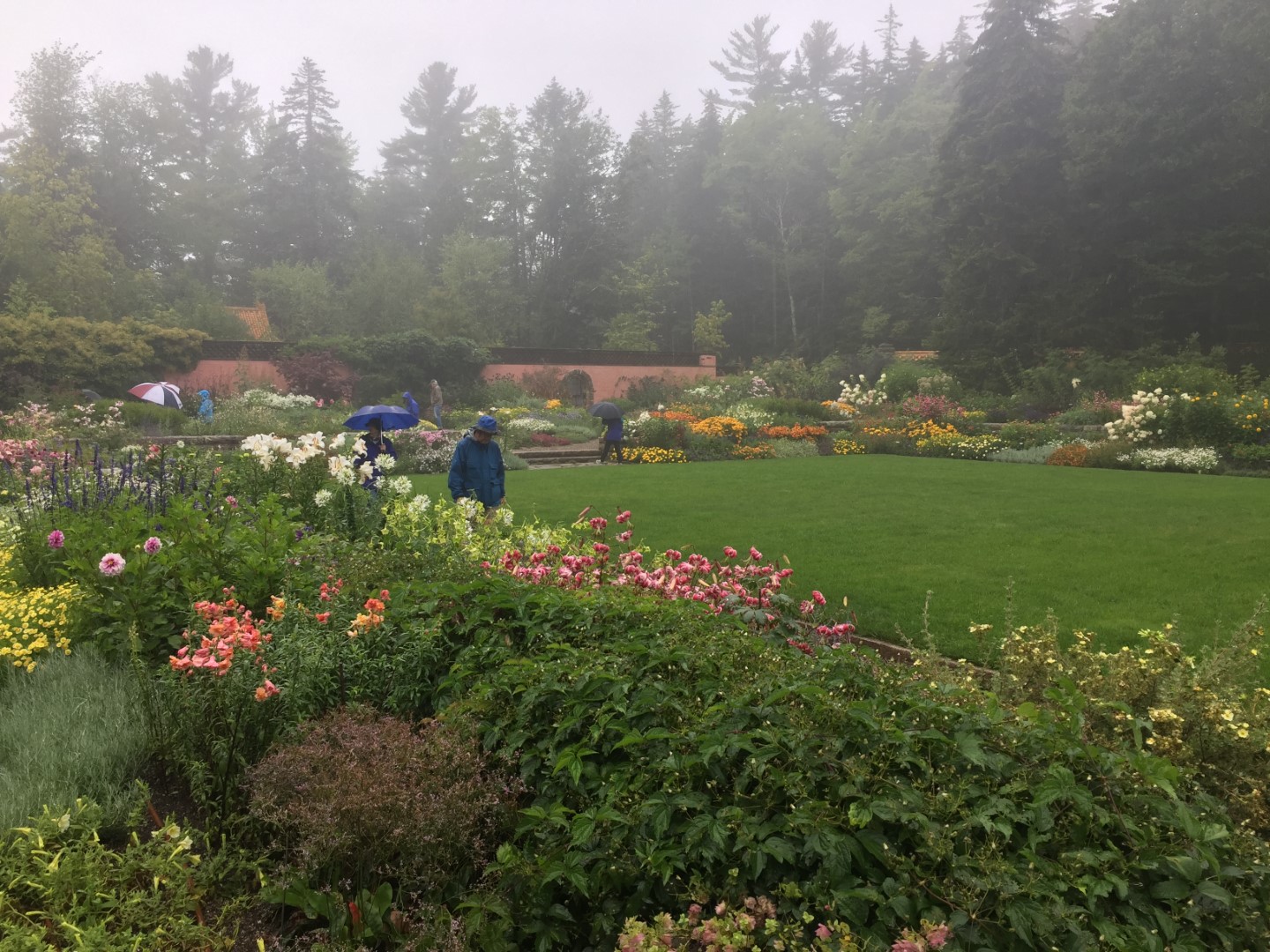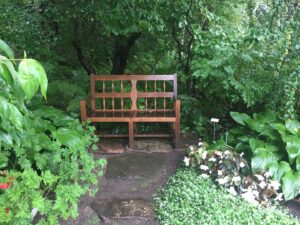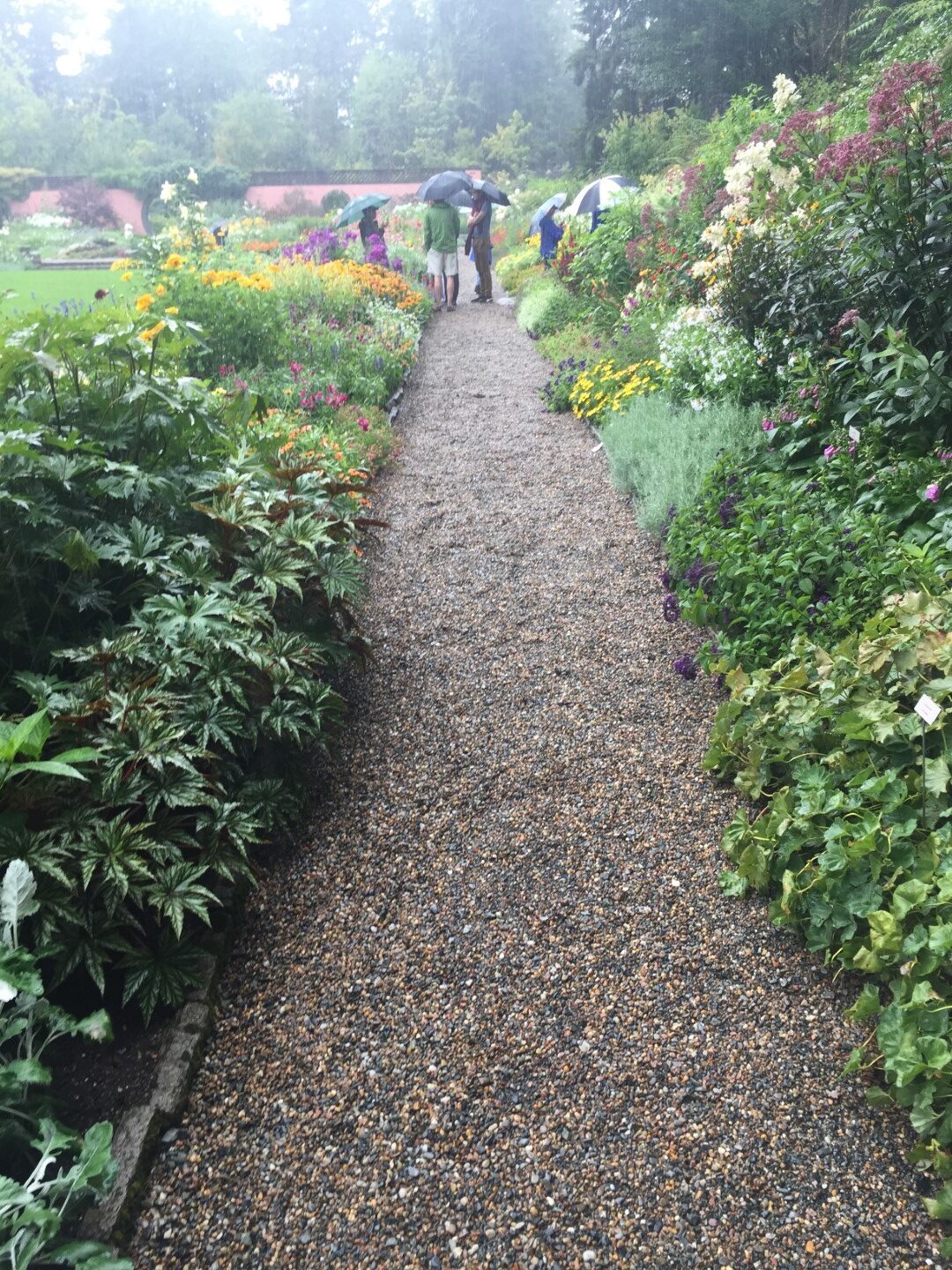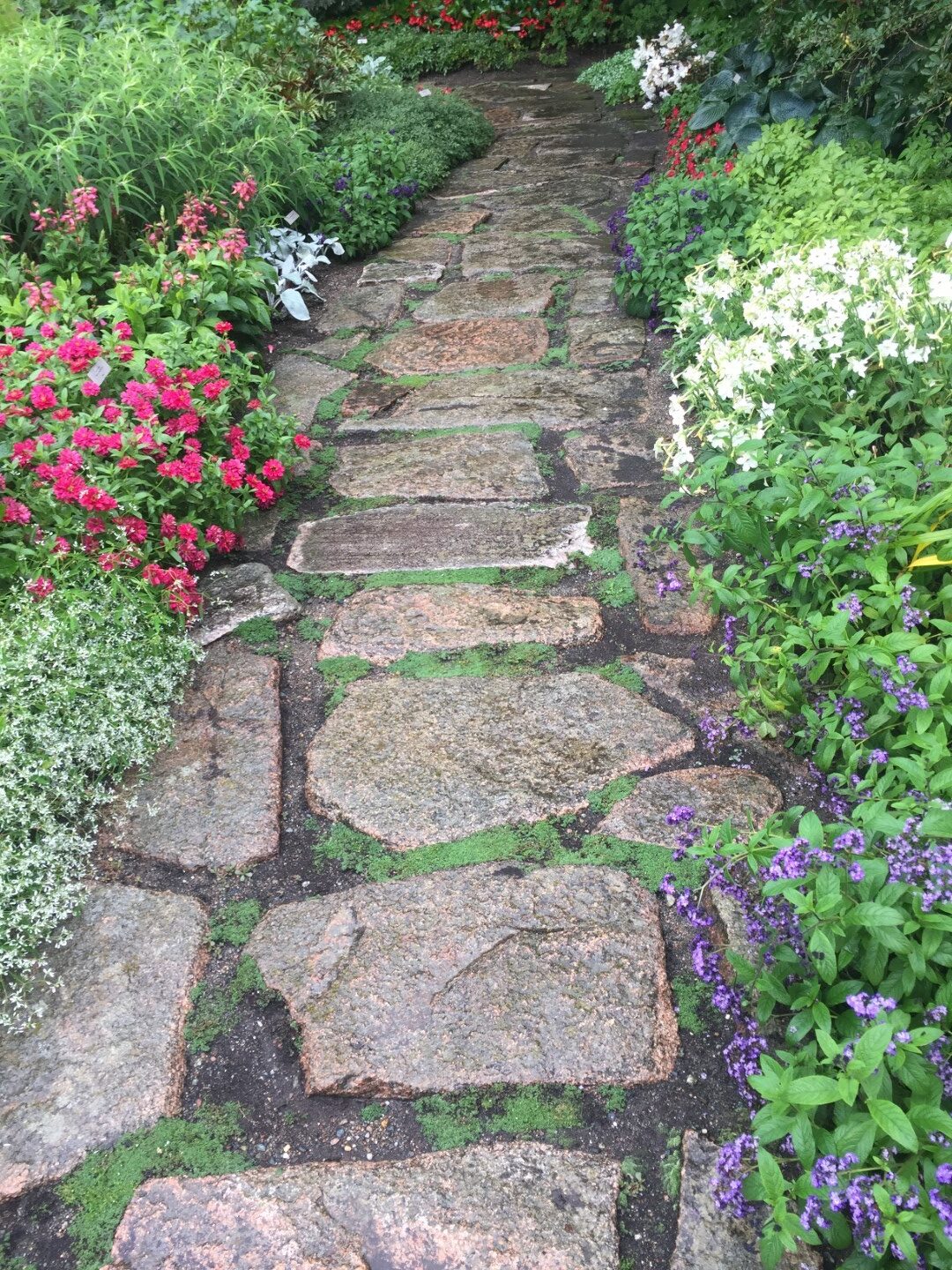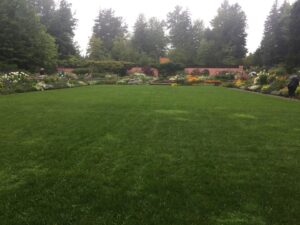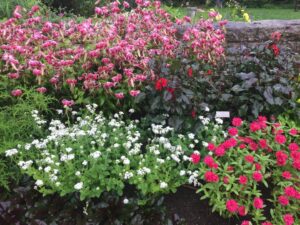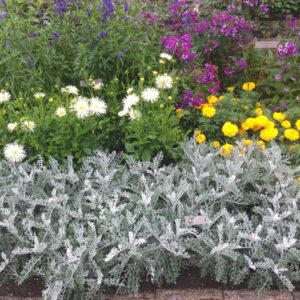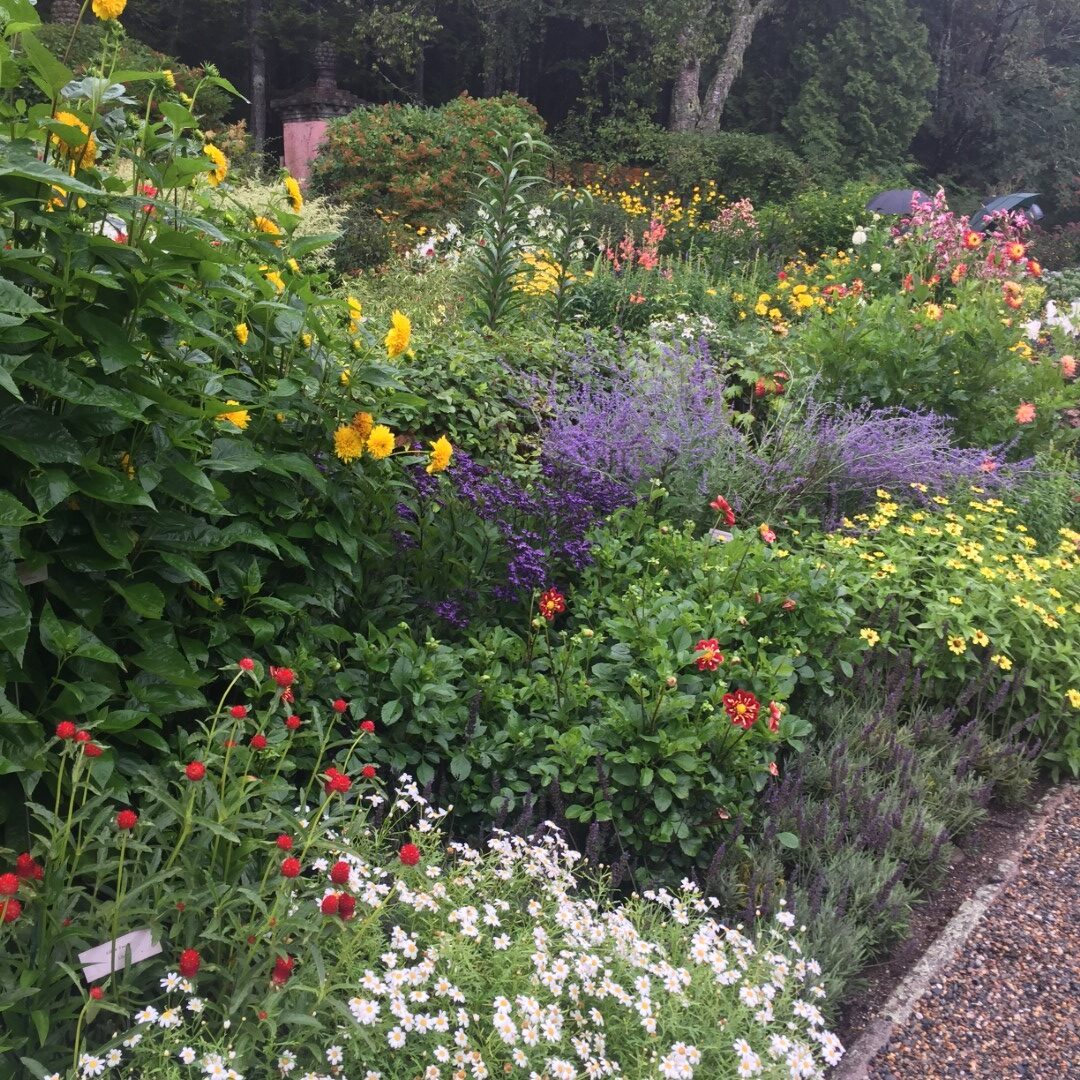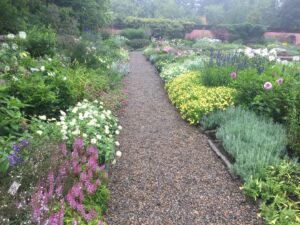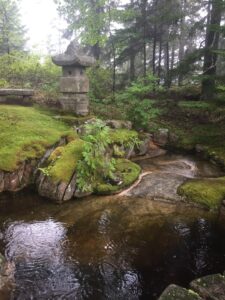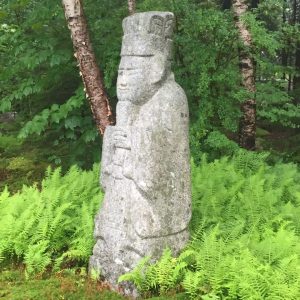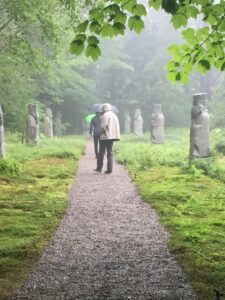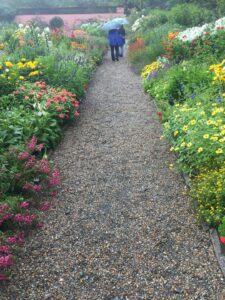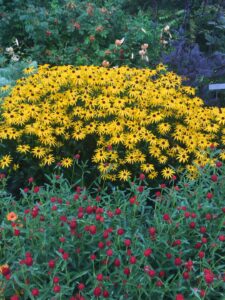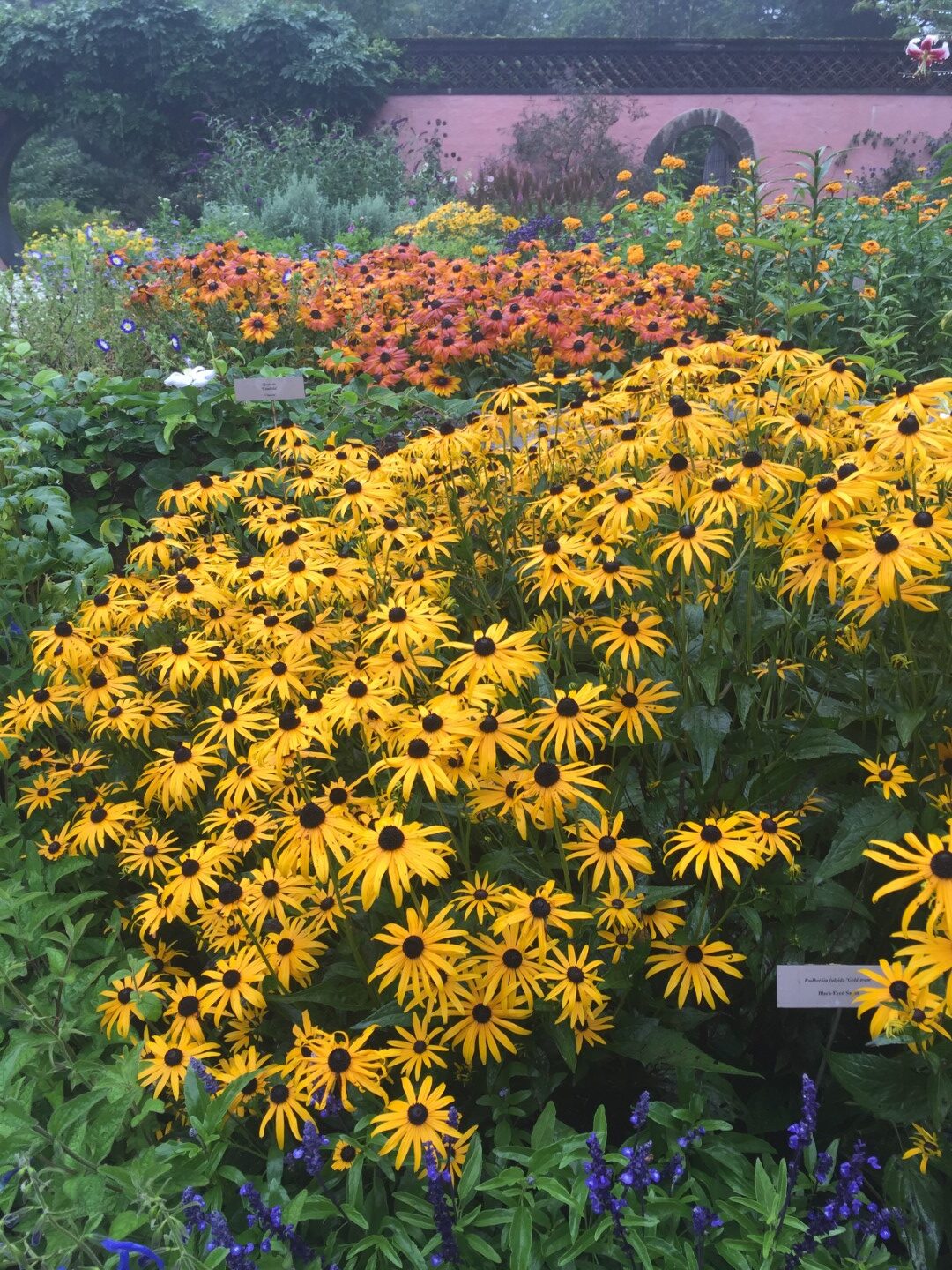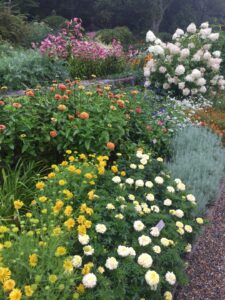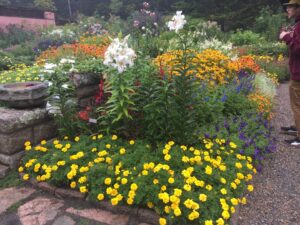One of the great American garden gems is the Abby Aldrich Rockefeller Garden in Seal Harbor, Maine. Surrounded by Acadia National Park on the island of Mount Desert along the coast of northern Maine, the garden is a hidden gem open to the public by reservation during nine weeks in summer. The garden is now part of the Land & Garden Preserve that also includes the Asticou Azalea Garden, Thuya Garden in Northeast Harbor, and natural lands at Little Long Pond and Hunters Cliff in Seal Harbor. The mission of the Land & Garden Preserve is “to share the beauty of historic lands and gardens on Mount Desert Island.”
Designed by Beatrix Farrand with her clients and philanthropists, Abby and John D. Rockefeller Jr., the garden is one of the most elegant and impressive gardens in the United States. According to the website, in 1961 David Rockefeller, Sr.’s wife Peggy took on responsibility for each year’s design of the flower beds. After Peggy’s death in 1996 her daughter, Neva Goodwin, continued the tradition. With the 2017 bequest from Mr. Rockefeller, the Land & Garden Preserve took ownership and responsibility for the garden.
The Abby Aldrich Rockefeller Garden is a combination of Asian influence complete with round entry ways through the Asian walls surrounding a palatial English flower garden. The gates give out to serene moss gardens with pools, ferns and statuary that include six pairs of tomb statues from Korea. These and other Asian statuary and the stillness of the environment give off a feeling of meditative peacefulness. One can but feel a sense of gratitude not only to the designer but also to the Rockefeller family for maintaining this oasis for the public.
Kathryn Strand, the Director of Development and Communications at the Land & Garden Preserve said, “Visiting the lands and gardens of the Preserve, or any beautiful, natural place is a chance to restore and calm ourselves. The benefits of connecting with nature are immense and essential to our well-being, especially in trying times.” The sense of peace is enhanced by the careful maintenance of the pathways and garden beds, including the large rectangular closely clipped lawn at the center and gravel paths along its edge. The scents from the flowers in the garden – a mix of perennials and annuals – combined with the piney air in the surrounding forest feel like you are in a climactic health resort. You can feel your blood pressure drop as your body absorbs the quiet, the scents and the invigorating and restorative air.
The garden’s design began in 1926, with construction starting in 1928. The garden consists of 3 acres within the walls. The garden beds are planted with approximately 70% annuals and 30% perennials. All of the annuals are grown at nearby greenhouses that are owned by the Preserve and where all the growing is done by Preserve staff. Approximately 6,000 annuals and new perennials are planted each year, with a “hot color side” (east) and a “cool color side” (west). The naturally growing mosses are irrigated and kept clear of debris (leaves, branches, needles) to maintain their vibrant, carpet-like effect.
The entire preserve totals 1,400 acres of historic natural lands, gardens, and trails on Mount Desert Island, between Seal Harbor and Northeast Harbor, bordering Acadia National Park. Within this natural paradise is the Asticou Azalea Garden, Thuya Garden and the Little Long Pond Natural Lands which the public can also visit without reservations. Even though the Land & Garden Preserve is focused on preservation, the directors emphasize “botanical innovation, horticultural excellence, ecological health, and best practices in environmental sustainability” so you always sense that everything is quietly very up-to-date.
The Asticou Azalea Garden is right across from the gracious old Asticou Inn with its large porch overlooking Northeast Harbor and the Thuya Gardens is also just a short walk from the hotel and its extended buildings. Little Long Pond is about two miles down the road and open to walkers, runners, hikers and dogs on the leash and then it’s just a bit further up the same road to the Abby Aldrich Rockefeller Garden and Seal Harbor.
Little Long Pond and surrounding areas are a biodiversity hotspot. The Preserve’s management of Little Long Pond is focused on maintaining this high-quality ecology, and the conservation of these lands is vital to the survival of this important ecosystem: 17 acres of meadows 12 acres of freshwater marsh, one bog and nearly 1,000 acres of forests, 10 miles of hiking trails and 10 miles of carriage roads.
The Asticou Terraces Trail that offers tremendous viewpoints of NorthEast Harbor was constructed in the early 1900s by Joseph Curtis, inspired by time he spent on the lands of his beloved harborside retreat. The garden opened to the public in 1962. Twenty-four acres make up the garden, terraces and, the shoreside dock and landing at the base of the hill. Forty-four species of insect pollinators have been identified in the garden. The garden is planted with equal amounts of annuals and perennials. Its borders have 16 different varieties of Hemerocallis, or Daylilies.
Charles Savage began the Asticou Azalea Garden in 1958 with prized azaleas and rhododendrons moved from Beatrix Farrand’s Reef Point garden in Bar Harbor. The garden consists of four acres plus 2.2 acres of the Stream Path. “There are more than 70 varieties of azaleas in the garden. Plants are selected based on multiple criteria including color, form, aesthetic features, evergreen foliage, bloom time, ability to be sheared, texture, fall color, and the general ability to express an Asticou aesthetic, which recalls a fusion of Acadia with classic Japanese garden design.”
Of course, each and all of the four destinations in the Garden Preserve are worth a trip from near and far. It is important to note that these beautiful places are just as important to the local community who can enjoy them at least three seasons each year and for those who may be visiting for vacation. These gardens are outlets where people can connect with nature, walk, hike and be out in the fresh air surrounded by one of the nation’s most beautiful national parks, Acadia.
Many thanks to the Preserve’s website for their information for this article. For more information on Beatrix Farrand, please go to the Beatrix Farrand Society website.
By Victoria Larson, Editor, Side of Culture
VK Larson Communications

